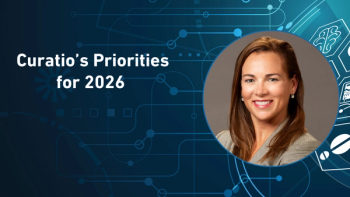
PBMs are squeezing independent long term care pharmacies, says Avalere Health study
Higher dispensing costs and rising negative margins
The Senior Care Pharmacy Coalition (Washington, DC), which represents independent long term care (LTC) pharmacies serving 400,000 patients nationally, points a finger at the consolidation of major pharmacy benefit managers (PBMs) in recent years for creating a tightening noose between the prices they charge and the MAC (maximum allowable cost) reimbursement provided by CMS under Medicare Part D, which is the source of most of the reimbursement for seniors.
Alan G. Rosenbloom, president SCPC, stated, "While the changes under MAC pricing should be based on actual variations in relevant market conditions, this does not appear to be the case in a variety of instances according to the actual transaction data. This opaque and hidden pricing methodology allows PDPs and PBMs to set and change payment rates for generic drugs without advance notice to LTC pharmacies and others -- and does not require them to publicly disclose why reimbursement rates are changed." (Prescription Drug Plans, or PDPs, are the insurers that often operate the PBMs that manage drug acquisition.) He also notes that while there are some transparency rule changes that will go into effect in 2016, those rules will not necessarily lead to any actual change in pricing policies or practices.
An analysis performed by Avalere Health on behalf of SCPC has four key findings:
- - MAC price reimbursement plus dispensing fees is often less than pharmacy acquisition costs plus cost to dispense for generic drugs — meaning, on average, LTC pharmacies lose money for generic medications they dispense at MAC pricing under Part D.
- MAC prices paid for the same generic drug on the same day by different payers vary considerably, which, SCPC believes, raises significant questions concerning the relationship between price variation and actual market conditions.
- The percent of prescriptions and total days supplied by generic drugs has increased to 87%.
- On average, LTC pharmacies lose money on more than 60% of the generic prescriptions they dispense, equaling more than 50% of all prescriptions they dispense under Part D.
Independent LTC pharmacies more or less operate in the same relationship to the bigger pharmacy chains that independent retail pharmacies operate in with the retail chains: offering better service in settings that don’t fit well with the chains. On the flip side, the PBMs assert that they can offer better pricing through efficiencies of scale. But that sort of argument is running throughout healthcare these days, as healthcare providers, drug distributors, and pharma companies themselves consolidate.
Newsletter
Stay ahead in the life sciences industry with Pharmaceutical Commerce, the latest news, trends, and strategies in drug distribution, commercialization, and market access.





